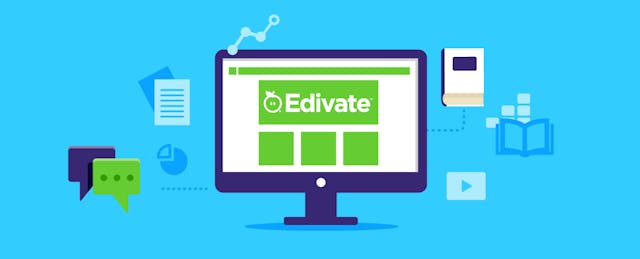To achieve real, lasting success in your schools, you need a way to support the development of your staff with anytime, anywhere access to resources. You also need a way to track and analyze your progress. Technology can help with both of these requirements.
We recently described the four keys to successful school improvement, validated by decades of research. The first step in realizing dramatic gains in student achievement is to have a strategic plan, which we wrote about in more detail here. The second step is establishing an educator effectiveness process to carry out your plan, which we explained in our article discussing five proven ways to promote great teaching.
The third key to success is having a technology platform that aligns with, scales, and supports your strategic plan and process.
An online platform can deliver lesson plans, instructional videos, and other resources to support teacher growth and development on demand. It can also provide analytics to help you measure progress, assess what is working and what is not, uncover key trends, and make better decisions.
In the past, tracking the progress of school improvement goals has been a difficult, time-consuming task. But advances in technology have made collecting, analyzing, and sharing data automated and instantaneous. District leaders can gather performance data and analyze it across a variety of factors in seconds rather than hours, giving them more time to work on their objectives.
When choosing a technology platform to support your efforts, here are six critical points to consider.
1. The platform must deliver high-quality professional development resources.
To help your teachers become more effective educators, the platform you choose should include a rich variety of high-quality resources, such as professional learning videos, downloadable lesson plans, and study guides.
Make sure you evaluate the kinds of supporting materials that accompany these resources as well. For example, does each video segment come with a full transcript, as well as an outline of the concepts being presented, so it is accessible to teachers with different learning styles? Does it include actionable information so that teachers can come to class fully prepared to implement what they’ve learned?
2. It must provide on-demand, 24/7 access.
The platform you choose should be mobile-ready, so teachers can access its resources from nearly any mobile device. That way, they can fulfill their learning goals in the moments between classes, during lunch, after school, or anywhere they find the time to refine their instructional practice.
3. It must provide highly targeted and personalized PD.
Teachers are no different from students: They want lessons personalized to meet their own unique learning needs.
The teacher effectiveness platform you choose should deliver highly personalized content to educators based on their professional interests and learning goals. Teachers also should be able to customize their homepages to display the tools and resources that they find most relevant.
What’s more, the platform should include tools for helping teachers create a personalized PD plan that is right for them.
4. It must facilitate teacher collaboration.
Too often, teaching is a solitary practice. Research shows that teachers are more effective when they are given opportunities to collaborate with colleagues in their grade level, department, or field of study.
The platform you choose should facilitate online collaboration between teachers and within teams and groups, letting you track discussions and share content with teachers and colleagues. It also should recommend peer groups based on a user’s interests, geography, and role in education.
5. It must offer robust administrative tools.
A teacher effectiveness platform should enable administrators to track teachers’ progress toward their professional learning goals with a few simple clicks. Administrators should receive automatic updates on teachers’ activities, simplifying follow-up and accountability.
In addition, administrators should be able to create an online catalog of professional learning resources for their entire school or district, and assign credit value to each of those materials. They should be able to recommend tools and information to teachers quickly and easily—anything from individual videos or lesson plans to lists of resources as part of a larger PD plan.
6. It must be easy to use.
If your teacher effectiveness platform is not simple and intuitive, staff won’t use it. Ideally, it should give all stakeholders a single place to access everything they need, so they don’t have to log in and out of multiple systems.
Edivate, School Improvement Network’s professional learning platform, meets all six of these key criteria, serving as a one-stop shop for managing the entire school improvement process.
With Edivate, teachers can access their professional growth plan, view their classroom observation results, and get resources to help them attain their goals--all in one location. And administrators can see each teacher’s history of professional learning and how that ties into achievement.
Visit us for more information about School Improvement Network and Edivate.



